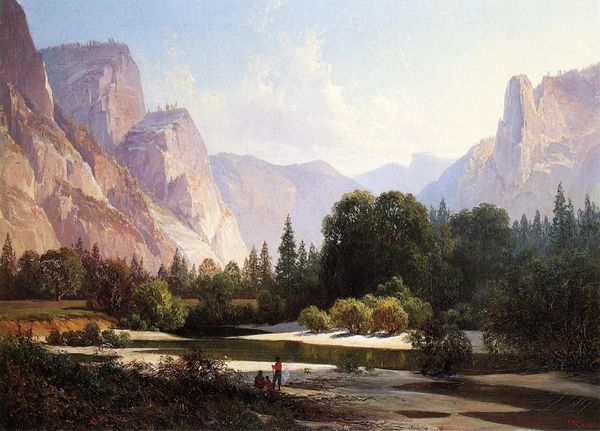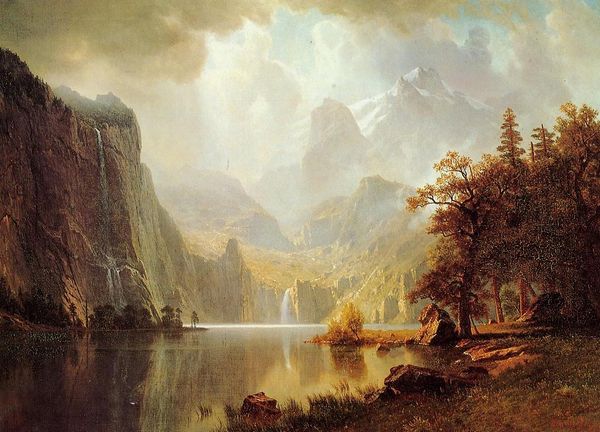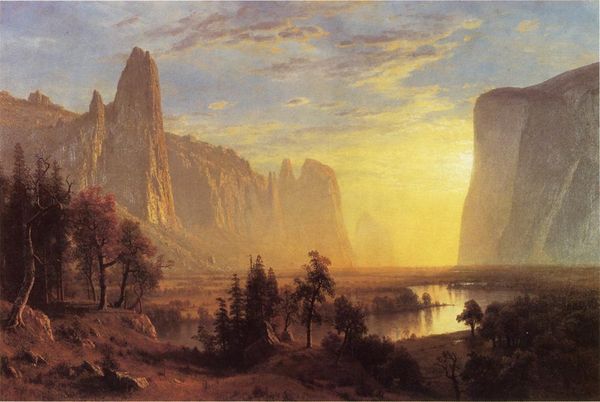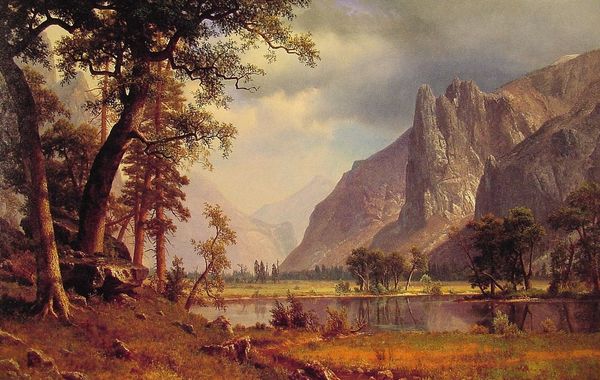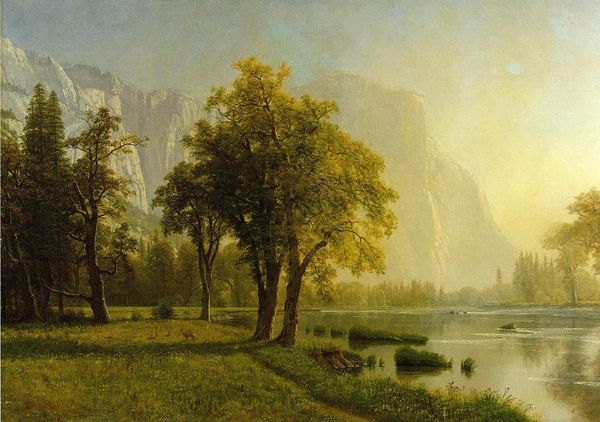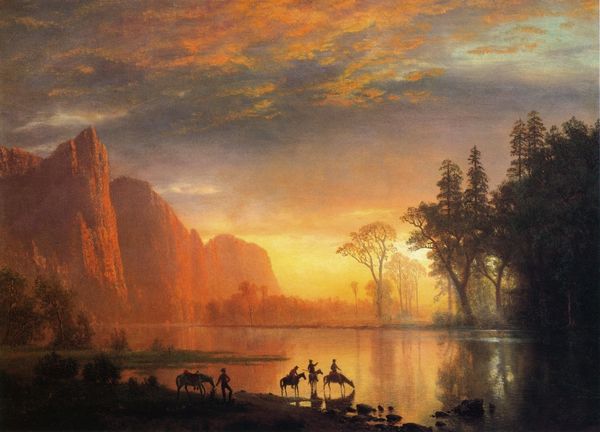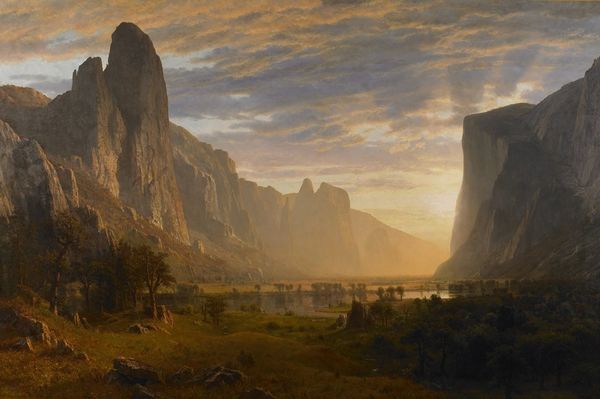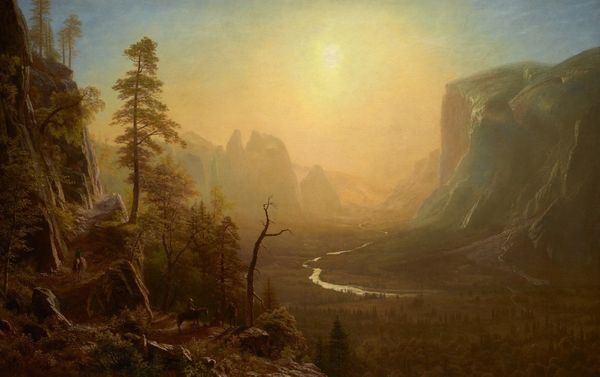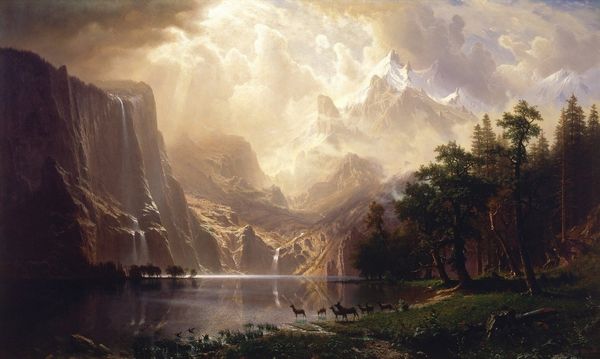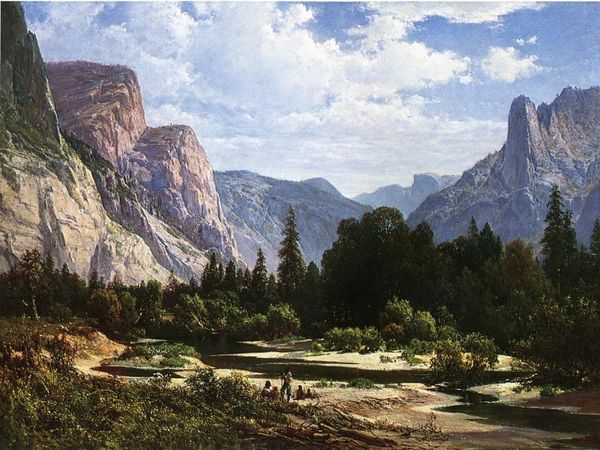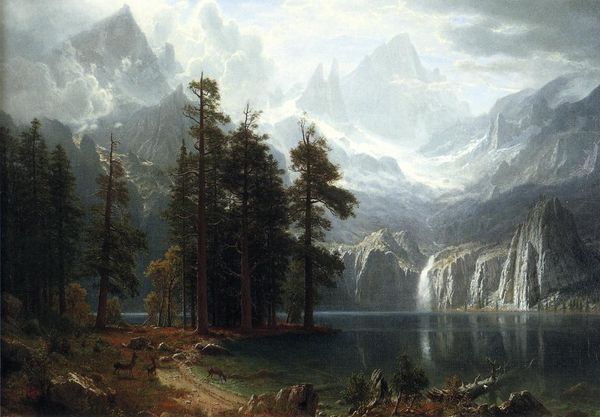
Copyright: Public domain
Curator: Let's discuss Albert Bierstadt’s “Looking Up The Yosemite Valley," a monumental oil painting completed in 1865. My immediate reaction is one of awe – the scale is truly impressive, creating a feeling of both reverence and sublime isolation. Editor: Indeed. Note how Bierstadt uses aerial perspective, muting the colors of the distant landscape and employing layers of mist. Observe the skillful rendering of light and shadow, heightening the sense of drama. The brushwork, particularly in the foreground, is quite tight and controlled. Curator: And we shouldn't ignore how that plays into the painting's wider historical context. These idealized visions of the American West were instrumental in shaping national identity and promoting westward expansion. There's a distinct narrative of Manifest Destiny at play, wouldn’t you say? Editor: Certainly. The composition itself speaks to that ideology. The almost divine light bathing the scene emphasizes the sublime purity and seemingly endless opportunity offered by the landscape, but the structural use of dark foreground elements to highlight light exposure in the back, calls attention to romantic aesthetics. Curator: Do you think the figures disrupt that interpretation at all? While minute, they are certainly present. Editor: Good point. Those small figures do temper the scene's grandeur, I think. But Bierstadt minimizes the sense of Indigenous peoples actually having rights or some form of power within this area. They’re romanticized, becoming visual components that augment rather than challenge this sense of American ownership. Curator: Precisely! By including them in this way, Bierstadt ultimately reaffirms that notion of control. The artwork acts as a visual tool solidifying claims about land, resources, and political authority, rather than some gesture of acknowledging the actual populations who lived there. Editor: I am starting to understand your point more now. Ultimately, I appreciate that within the structural execution of aesthetic principles Bierstadt's compositional approach, which on first inspection appears quite traditional, ultimately serves a broader cultural and political agenda. Curator: A compelling analysis; understanding those underlying forces certainly enrich our understanding. Editor: And examining these pictorial strategies heightens one’s historical insights and perspective, reminding me about the public's critical duty to constantly re-evaluate familiar imagery.
Comments
No comments
Be the first to comment and join the conversation on the ultimate creative platform.

